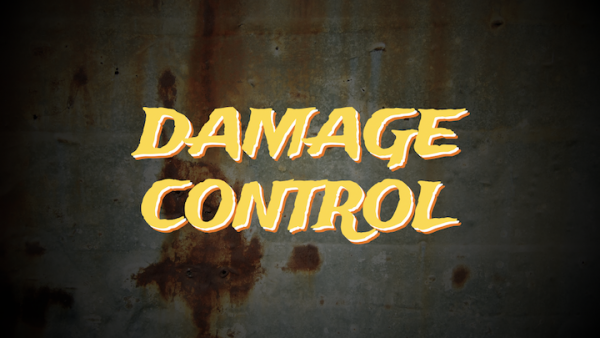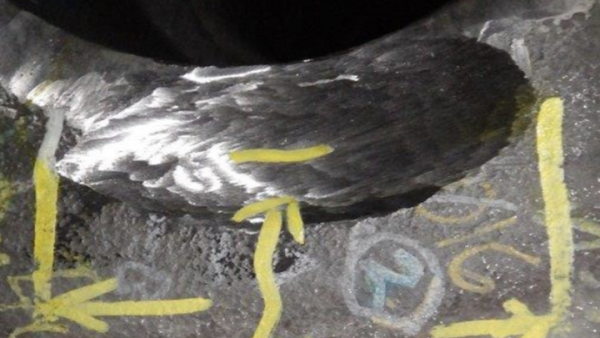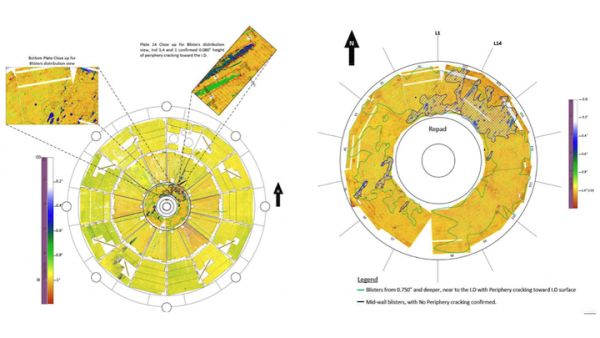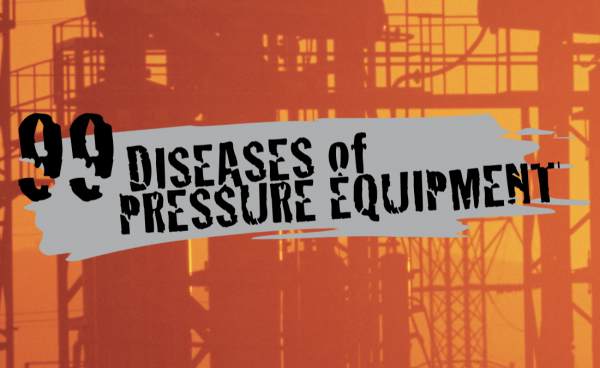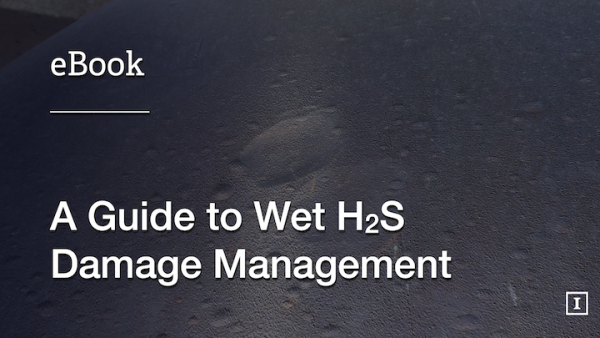Equipment in aqueous phase process environments containing hydrogen sulfide (H2S), generally referred to as sour service, can be particularly susceptible to numerous degradation mechanisms, including high temperature sulfidation, acidic sour water corrosion, and Wet H2S Damage. Wet H2S damage is a form of material degradation caused when atomic hydrogen diffuses into steel in wet H2S process environments and collects at any internal material imperfections or discontinuities, leading to corrosion and cracking. Wet H2S damage can manifest itself in numerous forms, including:
- Hydrogen blistering
- Hydrogen induced cracking (HIC)
- Stress-oriented hydrogen induced cracking (SOHIC)
- Sulfide stress cracking (SSC)
Wet H2S damage is complex and often misunderstood because the overall propensity for these damage mechanisms is governed by different controlling metallurgical and environmental variables. Furthermore, each form of wet H2S damage exhibits distinctive morphologies, introduces varying levels of risk, and ultimately can promote different failure modes. Damage propagation rates can also be difficult to predict and can be accelerated by minor changes in process environments.
Free eBook: Click here to download a more detailed overview of Wet H2S Damage.
Areas Susceptible to Wet H2S Damage
In general, wet H2S damage affects carbon and low-alloy steels, most notably in the oil and gas industry, although H2S can also be present in process environments in the mining, food processing, pulp and paper, wastewater treatment, and power generation industries. Any equipment that runs in conditions that are both above 50 ppm of H2S content and below 180ºF temperature in aqueous sour environments is particularly susceptible to wet H2S damage.
Given its damage progression mechanics, older or “dirty” steels are more prone to wet H2S damage because they generally have more volumetric inclusions, laminations, and original fabrication imperfections in both base metal and weld deposit regions. Also, steel plate is usually more likely to have inclusions than other product forms; therefore, the shell of pressure vessels, tanks, or sections of larger diameter longitudinal seam-welded piping components are ordinarily more susceptible to wet H2S damage than conventional seamless piping, tubing, or forgings.
Types of Wet H2S Damage
Hydrogen Blistering
Hydrogen Blistering is generally characterized by internal blisters (i.e., planar cavities that result in physical bulges) in steel that are caused by the accumulation of molecular hydrogen. These blisters tend to occur at locations of large non-metallic inclusions, laminations, or other metallurgical discontinuities in steel components. Hydrogen blisters can induce visible surface bulging on the inside surface, outside surface, or within the wall thickness of pressure equipment. Additionally, sometimes crack-like flaws can extend from the periphery of a blister, potentially propagating in the through-wall direction, especially near welds.
Hydrogen Induced Cracking (HIC)
Hydrogen Induced Cracking (HIC) is a form of internal hydrogen damage caused by the initiation and propagation of small crack-like flaws, often resembling small internal voids or blisters, that are generally laminar (in-plane) and oriented parallel to the inside and outside surfaces of steel. Over time, these cracks tend to coalesce or link-up due to internal pressure build-up and possibly local stress fields in damaged regions, often propagating into a weld or progressing in the through-thickness direction (a.k.a “stepwise” cracking). On the surface, HIC is typically horseshoe shaped and no bigger than the cuticle of one’s small finger.
Stress-Oriented Hydrogen Induced Cracking (SOHIC)
The hydrogen charging process for Stress-Oriented Hydrogen Induced Cracking (SOHIC) is the same as HIC and hydrogen blistering; however, SOHIC damage morphology usually appears as an array of cracks stacked on top of one another. This can result in a through-wall crack (sometimes zigzag) that is perpendicular to the surface of the component. Unlike HIC or hydrogen blistering, SOHIC damage progression is generally driven by relatively high tensile levels of both applied and residual stresses. Furthermore, damage usually occurs in base metal directly adjacent to weld deposit heat affected zones (HAZs) where damage often initiates from HIC, SSC, or other fabrication-related cracks, defects, etc. Compared to HIC or hydrogen blistering, SOHIC is much more insidious because of its propensity to cause through-wall leaks or catastrophic loss of containment.
Sulfide Stress Cracking (SSC)
Sulfide Stress Cracking (SSC) occurs when atomic hydrogen diffuses into high-strength alloys and steels in areas of high internal stress, such as grain boundaries, inclusions, and regions of triaxial stress at notches. When placed in proximity to tensile stresses, embrittlement and the beginnings of brittle fracture may occur.
Wet H2S Damage Detection & Prevention/Mitigation
The most common NDE method for detecting wet H2S cracking is Wet Fluorescent Magnetic Particle Testing (WFMPT). This method is able to detect sub-surface cracks in the steel that are caused by HIC, SOHIC, and SSC. For cracked piping and other components which cannot be inspected using WFMPT, an alternative technique is Phased Array Ultrasonic Testing (PAUT).
Although detection is important, new stainless alloys can be implemented to replace traditional steels in applications where corrosion can be particularly severe. When coupled with chemical inhibitors, these alloys are effective at mitigating corrosion, although they may in some cases still be susceptible to SSC.
Equipment that is specifically susceptible to SOHIC can be made more resilient by incorporating post weld heat treatment (PWHT) and/or by being alloyed up. HIC-resistant steels and polymeric coatings have also been successfully used to prevent damage. In more aggressive environments, another solution might be using stainless steel clad materials, as they are more resistant to this sort of damage.
Note on the Risks of Exposure to H2S
Hydrogen Sulfide (H2S) is a colorless, flammable, and extremely toxic gas that exhibits a strong "rotten egg" odor. H2S can cause possible life-threatening situations if not properly handled. Workers exposed to H2S can experience serious short term and long term effects, including rapid unconsciousness, coma, and even death. In petroleum refining environments where exposure to H2S is possible, all workers should employ appropriate procedures for identifying, monitoring, and preventing H2S exposure.
Related Topics
- Brittle Fracture
- Carburization
- Cavitation
- CO2 Corrosion
- Cooling Water Corrosion
- Corrosion Fatigue
- Corrosion Under Insulation (CUI)
- Cracking
- Decarburization
- Embrittlement
- Erosion Corrosion
- Fatigue (Material)
- Flue Gas Dew Point Corrosion
- Graphitization
- Green Rot
- High Temperature Hydrogen Attack (HTHA)
- High-Temperature Creep
- Hydrochloric (HCl) Acid Corrosion
- Hydrofluoric (HF) Acid Corrosion
- Hydrogen Embrittlement
- Hydrogen Stress Cracking
- Liquid Metal Embrittlement (LME)
- Metal Dusting
- Microbiologically Influenced Corrosion (MIC)
- Naphthenic Acid Corrosion (NAC)
- Phosphoric Acid Corrosion
- Pitting Corrosion
- Spheroidization (Softening)
- Stress Assisted Corrosion
- Sulfidation Corrosion
- Sulfuric Acid Corrosion
- Thermal Fatigue
- Vibration-Induced Fatigue
Relevant Links
Topic Tools
Share this Topic
Contribute to Definition
We welcome updates to this Integripedia definition from the Inspectioneering community. Click the link below to submit any recommended changes for Inspectioneering's team of editors to review.
Contribute to Definition


